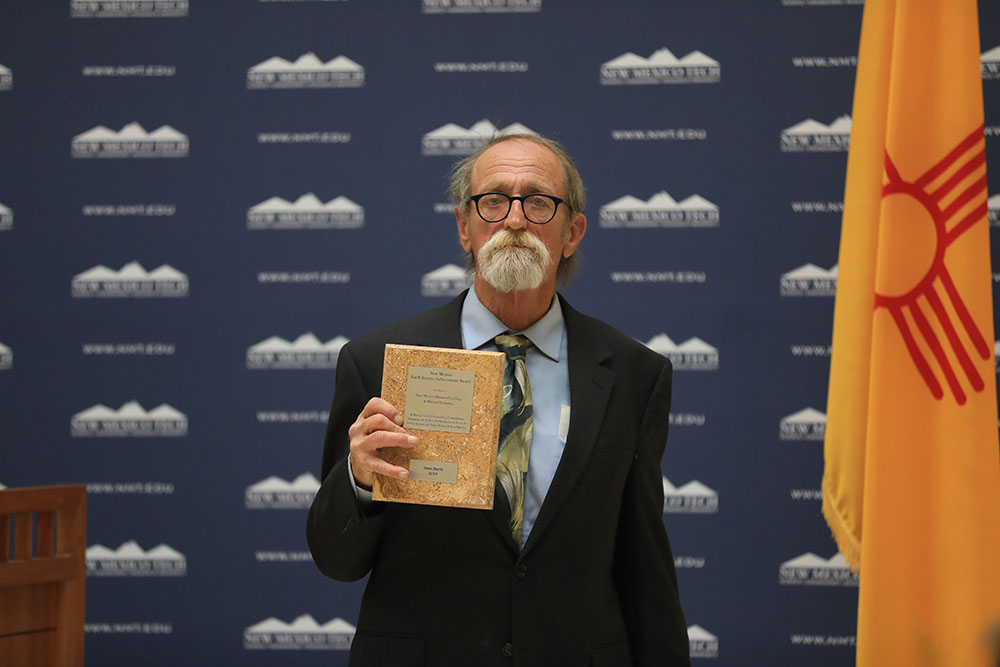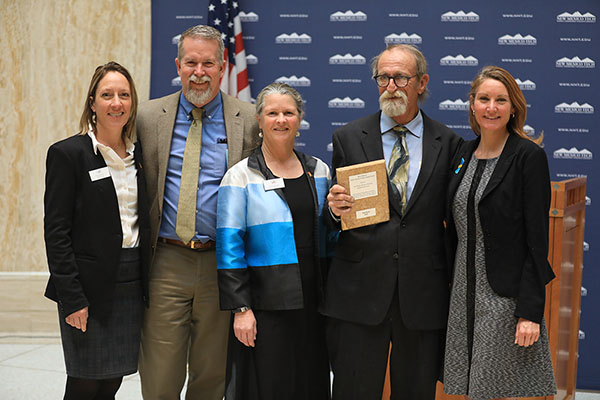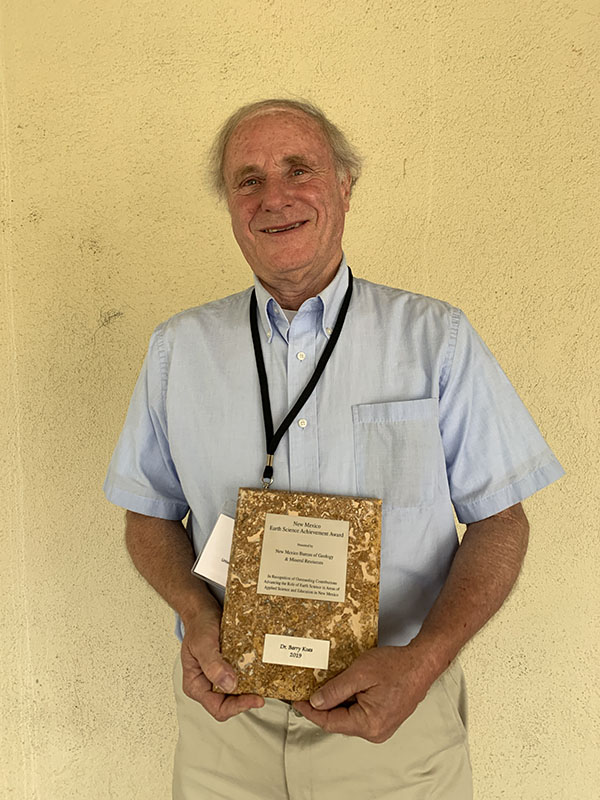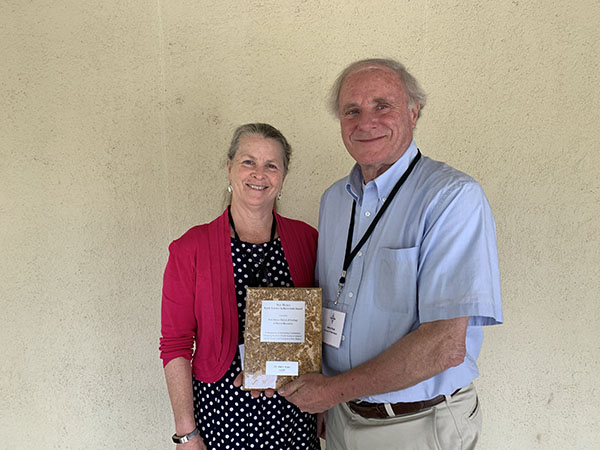
2019 Earth Science Achievement Awards
2019 Award Recipients:
Created in 2003, the Earth Science Achievement Awards generally honor two recipients, one for “outstanding contributions advancing the role of earth science in areas of public service and public policy” and the other for “outstanding contributions in advancing earth science and education.” Nominations for these awards are welcome from the general public and may be made directly to the director of the New Mexico Bureau of Geology and Mineral Resources.
Public Policy & Service



The New Mexico Bureau of Geology and Mineral Resources (a research division of New Mexico Tech) presented the 2019 Earth Science Achievement Award for Public Service and Public Policy to Steve Harris, Executive Director of Rio Grande Restoration and an avid conservationist at noon, Tuesday, Feb. 19, in the rotunda of the state capitol building. The award presentation coincided with Earth Science/New Mexico Tech Day at the Roundhouse.
In his work at Rio Grande Restoration (RGR), Steve Harris (pictured at right) fills many roles: technical expert, motivated journalist, skilled educator, and passionate river advocate. He works tirelessly to change our perspectives and influence priorities and policies for the responsible use and protection of the state’s water resources, and he underscores the profound importance of healthy riparian ecosystems.
These awards honor outstanding public servants who have championed earth science issues in New Mexico. Harris, our first awardee for 2019, has served for the last 24 years as founder and Director of RGR, a non-profit, river advocacy organization whose goal is to see the Rio Grande restored as a great river with a healthy ecosystem. He has driven countless miles to attend hundreds of meetings around the state, and he has had a major impact on water resource issues in the Rio Grande watershed. RGR has emerged as one of the most effective river advocacy entities in the state, and subsists mostly on small donations from foundations and individual donors.
Harris realizes the necessity of bridging the gap between science and policy, and he participates in many activities designed to educate politicians, government officials, community representatives, and others. He consistently supports the gathering of modern hydrologic and ecologic data for science-based decision-making. Steve understands that existing state agencies specialize in collecting good data, and he advocates for state and federal funding for such efforts. He is a skilled journalist, and has the rare ability to synthesize diverse data sets, select the essential points, and organize a compelling narrative. Steve was also among the first to successfully establish a partnership between farmers and environmentalists along the middle Rio Grande valley.
The New Mexico Bureau of Geology and Mineral Resources is a non-regulatory research and service division of New Mexico Tech in Socorro. For 92 years, the bureau has served as the geological survey for the state of New Mexico. Nominations for next year’s awards are welcome from the general public and may be submitted directly to the director of the Bureau of Geology.
Research & Education


The New Mexico Bureau of Geology and Mineral Resources (a research division of New Mexico Tech) awarded the 2019 Earth Science Achievement Award for “outstanding contributions in advancing earth science and education” to Dr. Barry Kues. The presentation (see text) was made at the New Mexico Geological Society Spring meeting.
In the 45 years since he began working as geology professor at University of New Mexico, Dr. Barry Kues has contributed greatly to the science of geology in New Mexico through research, teaching, leadership, and service. A paleontologist and stratigrapher, Barry has focused his research almost exclusively on New Mexico geological problems. Many of his papers have been published in New Mexico-based journals, and focus largely on creatures that lived in or near shallow seas that covered New Mexico between 145 and 65 million years ago. He has published technical papers on Cretaceous sauropods, mosasaurs, gastropods, crabs, bivalves, and nautiloids, among other things, and is also the author of the University of New Mexico Press book “The Paleontology of New Mexico”, which provides a detailed examination of the flora and fauna of New Mexico over the past 500 million years. His most recent book, “A Brief History of Geological Studies in New Mexico with Biographical Profiles of Notable New Mexico Geologists”, contains 42 sketches of the lives of men and women who influenced our understanding of the geology of the state, as well as a detailed narrative of the evolution of geoscience in New Mexico. Barry has authored, edited, or co-edited 14 other books, including 11 NMGS Fall Field Conference guidebooks.
In addition to being an engaged researcher, Kues has influenced the field of geoscience education at all levels. As a professor at the University of New Mexico between 1974 and 2011, and an emeritus professor since 2011, he has educated and inspired hundreds of students through the teaching a wide range of courses and the advising graduate students. He has also raised public awareness in New Mexico through his interactions with museums and public schools, and through his writings in newspapers. On field trips, he is the person sought out to identify any “mystery fossils” that have been discovered. Barry always patiently and cheerfully identifies them, and explains about the world they lived in.
Nominations for next year's awards are welcome from the general public.



